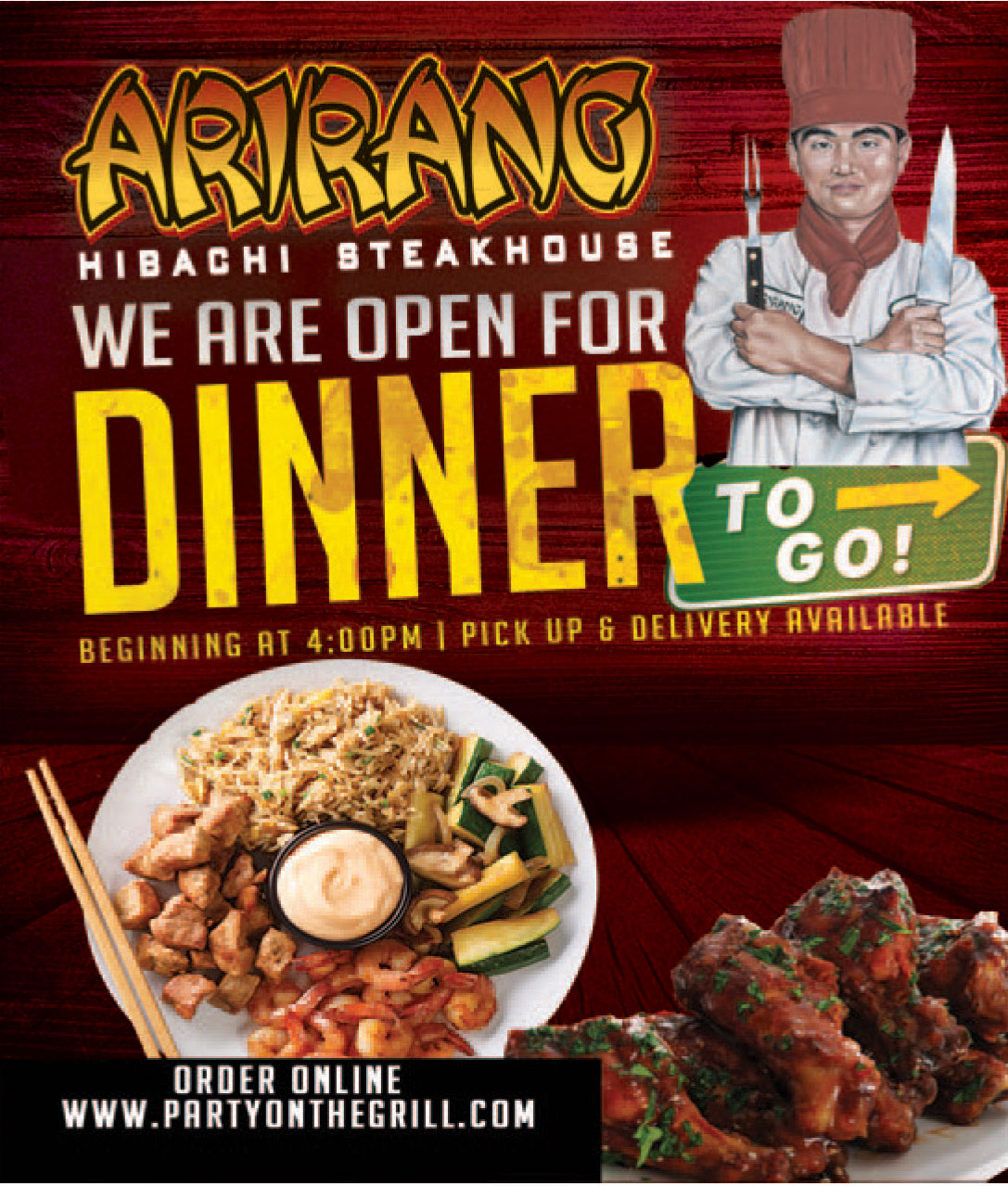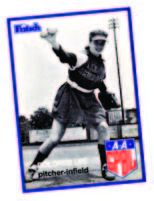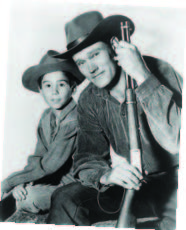With Arturo’s in Maplewood a smash success, chef Dan Richer takes his dough on the road to Jersey City
Razza
275 Grove Street, Jersey City. Phone: 201.356.9348
Open Monday through Saturday from 5:30 to 10 p.m. All major credit cards accepted. No reservations are taken. Small plates and salad range in price from $4 to $14. Pizzas are $12 to $18.
It’s late afternoon at Razza, where the art and science of flour and water converge and judgment is pronounced every day at this time.
Dan Richer, bread maestro, is removing 18 loaves from his wood-fired oven at the rear of Razza Pizza Artigianale on Grove Street in Jersey City. They are sizable loaves, but there are just 18. That’s all he bakes any day Razza is open. There’s a deja-vu to his explanation of why: “That’s what fits in my oven. We can’t do a second batch because the oven temperature wouldn’t be right and the bread wouldn’t be right. So when we run out, that’s it.”
This all merits thought, but the nose is ruling. And Richer is talking about his “10 Points for Properly Baking Bread” as he checks each loaf. Yes, it’s cooked all the way through. It’s firm and crisp on the outside.
There are big holes in the crumb. There’s no tunneling. There are ears.
Ears? Yes, Richer says. Ears.

All photos courtesy of Razza
“Every loaf needs an ear. You can pick up a loaf by an edge that rises on the top of a loaf.” He points to one loaf that lacks a proper edge. A problem with the scoring—a slash—made just before the loaves were paddle-carried into the oven. The angle of the slash? The depth of the slash?
Richer is picking up his loaves by their ears, inspecting each one. The vast majority of the 18 loaves have ears in tune with the baker’s carefully orchestrated ritual that consumes a good part of the day at Razza and has consumed the life of the man who shuns the word chef to describe his occupation and smiles, proudly, as he says, “I’m a craftsman.”
Meanwhile, the Razza front-of-the-house team—all of whom had to score 90 or better on a 15-page exam—is gathering at a table to go over the night’s specials. They include a new cocktail, “The Martinez,” which actually is an old cocktail born in California in the 1840s. It’s nigh on showtime, and people are lined up at the door of 275 Grove. They know where they want their bread buttered.
In the beginning
If the name Dan Richer sounds familiar, if the passion, focus and intense pursuit of authentic and correct is something you’ve experienced not in Jersey City, but a little closer to home, then you likely know Arturo’s, the epicenter of soul-satisfying Italian food and pizza in Maplewood. Arturo’s is also owned by Richer, and Razza is the place Arturo’s spawned.
Years ago, Richer bought the longtime suburban pizza spot, but added his own bill of fare—notably a market- and season-driven tasting menu that drew national attention and garnered Richer a spot on the list of candidates for Rising Star Chef of the Year from the James Beard Awards. But he kept working on his pizza, which was head and shoulders above the then-growing pack of pizzaiolos, though not at the level of the best pizza-maker on the planet, New Jersey’s own Anthony Mangieri.
Then, one day, after hearing about Richer, Mangieri “came in for a pizza,” Richer says.
“At that point, I was focusing more at Arturo’s on the tasting menu, the pasta-making, the rabbit-cooking. When he came in, I was so embarrassed by my pizza-making that I knew I had to get better. That visit gave me a new direction.”
A direction that took him to Jersey City, to build Razza.
Richer started studying, reading bread books, delving into the science of fermentation. He reels off the names of bakers who influenced him—from the French professor Dr. Raymond Calvel, who wrote the seminal “The Taste of Bread,” to the American author, theologian, lecturer and restaurateur Peter Reinhart—and talks of years of trials and errors.
 “In pursuit of making great pizza,” Richer says, “I learned how to make great bread.”
“In pursuit of making great pizza,” Richer says, “I learned how to make great bread.”
Inspiring Minds
Dan Richer is all about learning. He studied Japanese cuisine and, in 2005, found Sushi Yasuda on East 43rd St. in New York. Those who worship purist theologies in cuisine know Naomichi Yasuda as the best sushi chef.
Richer agrees. It was Naomichi Yasuda’s words, spoken as he served forth his fishes to Richer at his restaurant, that made the younger chef see the correlations between fish and rice and bread and butter.
“I had the same feeling with Yasuda’s sushi as I did with Anthony’s pizza: It was the rice that did it for me. What Yasuda explained to me so well was the element of time and temperature, of different fishes at different temperatures, of eating one piece at a time because only at that precise moment are both the fish and the rice at the perfect time and temperature. It has to be done at the last second and has to be eaten right away.
“When I started making the bread and the butter, I realized they, too, couldn’t be perfect if the bread was too hot or too cold or the butter too hot or too cold. That level of seriousness is something we take to our bread and butter. I take so much inspiration from Chef Yasuda.”
So much so, that when Naomichi Yasuda left his New York restaurant to the care of his sushi-chef lieutenants and went to Japan to open a minuscule temple to sushi, Richer made a point of traveling to Japan to eat there. He found Yasuda in his element—and at the height of his craftsmanship.
 He is sitting in the dining room at Razza, where he has just finished shaping his dough into the now-iconic Razza shape that resembles a French batard. He glances over at the loaves, resting in individual linen-lined baskets. He consults with Octavio Gadea, who works with him on the bread. Then he continues.
He is sitting in the dining room at Razza, where he has just finished shaping his dough into the now-iconic Razza shape that resembles a French batard. He glances over at the loaves, resting in individual linen-lined baskets. He consults with Octavio Gadea, who works with him on the bread. Then he continues.
“The thing that makes Anthony’s pizza better than anyone else’s is the dough. When you walk into his restaurant, you can smell it. It’s the dough. The essence and soul of pizza is fermenting dough.” True. Be it at Mangieri’s first Una Pizza Napoletana in Point Pleasant Beach, N.J., or the second, on East 12th Street in Manhattan, or the current Una Pizza, in San Francisco, the dough’s been the thing.
As Richer read and worked and experimented, his processes matured. He realized the key was in the fermentation. “I started fermenting everything I could; you come to understand how fermentation is controlled, how to make beneficial bacteria that out-perform the harmful bacteria.
“Innately, as humans, we’re meant to ferment. That became clear to me. It took me out of cooking and into something more like a craftsman. I feel more akin to an ironworker or a cabinet-maker than a chef. You need to understand iron, or wood, and once you understand it, you can put it back together the way you desire. The same is true with flour and water.”
When Richer says he started fermenting “everything,” he isn’t kidding. Pickles, sure. Yogurt, cheese, crème fraiche, naturally.
Then came butter. It was the natural partner for Richer’s bread which was, finally, getting to the level that made him feel good about serving it to his diners. Richer’s butter couldn’t be merely like any other premium butter, not even hyper-priced imported French butter or the good, truly good, cultured butters now sold in supermarkets. Richer’s own butter is made from cream that comes from cows pastured on a dairy farm in Pennsylvania. This dairy-farming family makes small batches of yogurt and saves the cream that rises to the top for Richer. When he speaks of that cream, the craftsman gets a little poetic.
“There’s a week in April when the cream changes,” Richer says. “There’s a time when the cows eat onion-grass and you can taste it in the cream. I love to celebrate the seasonality of our own butter. What’s the fun if it doesn’t taste different? It’s such an amazing cultured product.”
It’s what the denizens are waiting for: Razza’s bread-and-butter course.
 Razza Right Now
Razza Right Now
Before Richer took over the space, 275 Grove had been, in long succession, a bar, a wine store, a popcorn store and, way, way before, The Majestic Theater and a home for vaudeville. It is smaller than Arturo’s. Razza’s kitchen is tiny and much cooking, baking and prep work is done at the rear of the dining space, offering diners a bit of culinary theater. That suits Richer’s mission just fine: “Since our space is smaller, we focus more. That means, if we only do five things, we have to do them very well. On the surface, we look like another wood-fired pizza restaurant. Sometimes it seems like we’re nit-picking. But it’s the details that separate us.”
 Let’s Eat
Let’s Eat
First, the bread. It tastes at once nutty and then, faintly, of rye. This never dominates the palate, but scents the mind with its nuance. There’s not just a single texture to the bread, but multiple textures, from the top crust to the bottom crust—and, oh, are they ever different—to the interior crumb, with its own layers of varying textures, particularly around the holes. The initial slice is gone before you have a chance to delineate all those layers.
So you take another slice, this time remembering the butter. The butter, at once beguilingly earthy-gamey and lushly creamy, has a natural salinity that can become elusive if you go too bonkers on the texture thing. I was into my third slice before I smacked myself for over-thinking. I started eating the butter straight, talking myself into believing it’d be a kind of palate-cleanser. Then came the stracciatella, the only thing that could get me to stop eating the butter.
Razza’s special salad that day was centered around minutina, a green that’s grassy in appearance, verdant and almost juicy in flavor. Its inherent sweetness proved an irresistible counterpoint to slivers of wild mushrooms, most importantly maitakes. There’s the barest splash of balsamic vinegar and exquisite olive oil to help fuse the greens and mushrooms.
Meatballs here employ Razza’s bread as binder. They are fluffy, they resonate beef, they come swathed in sauce.
For Dan Richer’s popular Pork Pie, pig’s feet are simmered. The ensuing broth is chilled. The fat is skimmed. The result is a kind of pork “jello,” which is cut into tiny cubes. These cubes are set atop pizza dough along with bacon and shaved onion. The gelatin melts into the dough as the pie bakes in the wood-fired oven, mingling with the addition of Parmigano-Reggiano cheese into a kind of pork sauce. After one slice, Razza’s Pork Pie soars to the very top of my personal Last Meal foods’ list.
– Andy Clurfeld
Fact is, Razza does far more than five things better than anyone else around. There’s the bread, yes. The butter, check. The fire-roasted meatballs, of course. There’s also the handmade stracciatella, a cheese meant to go with the Razza bread. There are the pizzas, some of which are seasonal, and there are salads, with many ingredients sourced from local farms. There are the daily special pastas, the artisan cocktails and the short-and-sweet wine and craft beer lists.
There’s also the setting. Richer preserves the past while making comfortable the dining experience. One wall, with its layers and layers of paint jobs past, looks like an Abstract Expressionist painter got a deal on greens, blacks and browns and went to town. It’s got the kind of texture that makes touching an irresistible response, much like you have to touch Richer’s breads. There’s a wood bench, from a temple, and wood slabs from Pennsylvania barns set atop iron pedestals as tables. (Richer clearly respects his fellow craftsmen.) There’s a huge blackboard, with the Razza processes for dough, butter, meatballs and more diagrammed in chalk.
Razza’s oven is the altarpiece, where the embers fundamentally simmer all night long and a giant cast-iron door keeps oxygen at bay. “When we get here in the morning,” Richer says, “it’s at 685 degrees.” The bread starts baking when the oven reaches 550 degrees, give or take 25 degrees, but no more, no less, and the residual heat—after the bread is done and the oven is at about 525 degrees—is used to roast onions and meatballs. After that, new wood is used to stoke the fire so the oven is ready for the nightly procession of pizzas. There is a dance of aromas all day, all night at Razza.
Those aromas linger, much as they do at the restaurant homes of Dan Richer’s mentor, Anthony Mangieri, with whom he shares a fundamental philosophy: The party’s over—for the day, at least—when the fresh dough or daily bread is gone. The smart savor those aromas, the sign of a master craftsman at work.
 Do you have a hot topic for Dr. D’Angelo and his Trinitas ER team?
Do you have a hot topic for Dr. D’Angelo and his Trinitas ER team?

 The Office Beer Bar & Grill • Asian Seared Tuna Steak
The Office Beer Bar & Grill • Asian Seared Tuna Steak  Paragon Tap & Table • Goat Cheese Panna Cotta
Paragon Tap & Table • Goat Cheese Panna Cotta  A Toute Heure/100 Steps Supper Club & Raw Bar • Catch of the Day
A Toute Heure/100 Steps Supper Club & Raw Bar • Catch of the Day The Office Beer Bar & Grill • Crispy Asian Chicken Wontons
The Office Beer Bar & Grill • Crispy Asian Chicken Wontons  The Black Horse Tavern & Pub • Seasonal Seared Veal Chop
The Black Horse Tavern & Pub • Seasonal Seared Veal Chop 
 The Office Beer Bar & Grill • Mediterranean Hummus Platter
The Office Beer Bar & Grill • Mediterranean Hummus Platter  George and Martha’s American Grille • Grilled Steak Sandwich
George and Martha’s American Grille • Grilled Steak Sandwich  The Office Tavern Grill • Rare Seared Ahi Tuna
The Office Tavern Grill • Rare Seared Ahi Tuna Daimatsu • Toro Tartare
Daimatsu • Toro Tartare Publick House • Grilled Swordfish
Publick House • Grilled Swordfish  Morris Tap & Grill • Duck Quesadilla
Morris Tap & Grill • Duck Quesadilla Thai Amarin • Salmon Panang
Thai Amarin • Salmon Panang  The Office Beer Bar & Grill • Pulled Pork Potato Skins
The Office Beer Bar & Grill • Pulled Pork Potato Skins  Café Z • Hot “Z” Shrimp
Café Z • Hot “Z” Shrimp  Chestnut Chateau • Braised Lamb Shanks
Chestnut Chateau • Braised Lamb Shanks Mario’s Tutto Bene • Vinegar Pork Chops
Mario’s Tutto Bene • Vinegar Pork Chops  Rio Rodizio • Brazilian Meats
Rio Rodizio • Brazilian Meats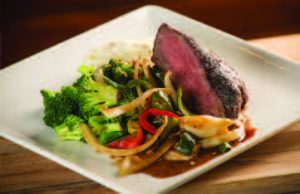 The Manor • Duet of Foie Gras
The Manor • Duet of Foie Gras
 RAISING THE BAR
RAISING THE BAR
 SQUARE DEAL
SQUARE DEAL WALL FLOWERS
WALL FLOWERS SEED OF AN IDEA
SEED OF AN IDEA ROLLING STONES
ROLLING STONES ROCK STAR
ROCK STAR THAT’S NUTS!
THAT’S NUTS! SEAT OF POWER
SEAT OF POWER VINTAGE GLASS
VINTAGE GLASS HAND IN GLOVE
HAND IN GLOVE BASKET CASE
BASKET CASE






 The last week in January is a particularly popular time to visit Key West, especially for sun-worshipping foodies. That’s when the sleepy town perks up for the Key West Food & Wine Festival, which just completed its sixth spin around the block (the block being Duval Street, main drag of the Conch Republic). The brainchild of local legend Marc Certonio (left), the Wednesday-thru-Sunday gathering is, happily, still something of a well-kept secret. There are more than 30 different events, including various strolls, tastings and beach parties—but with dozens, not a mob of hundreds. Also, Certonio has cultivated strong relationships with wine purveyors and wine makers, so you’re likely to see wines of small production and hard-to-find beauties. This year, Archery Summit, Foxen and Byron wines were being poured.
The last week in January is a particularly popular time to visit Key West, especially for sun-worshipping foodies. That’s when the sleepy town perks up for the Key West Food & Wine Festival, which just completed its sixth spin around the block (the block being Duval Street, main drag of the Conch Republic). The brainchild of local legend Marc Certonio (left), the Wednesday-thru-Sunday gathering is, happily, still something of a well-kept secret. There are more than 30 different events, including various strolls, tastings and beach parties—but with dozens, not a mob of hundreds. Also, Certonio has cultivated strong relationships with wine purveyors and wine makers, so you’re likely to see wines of small production and hard-to-find beauties. This year, Archery Summit, Foxen and Byron wines were being poured.
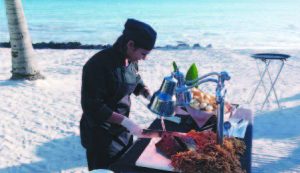 WEDNESDAY
WEDNESDAY THURSDAY
THURSDAY FRIDAY
FRIDAY
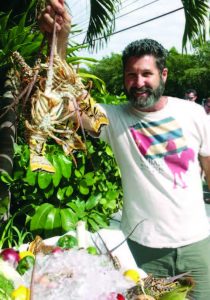 On Marc Certonio’s advice, we snagged a pair of tickets to the event at Charlie Mac’s, a local spot that has some of the best food in town. Juan Hernandez (right), the southeastern director for Domaine Select wines, was conducting a six-course, six-wine dinner for 30 people. I don’t even know where to begin, but suffice it to say that when the braised pork and pasta dish came out paired with a semi-dry Lambrusco, my eyes rolled back into my head. That was course four or five. At some point, Juan decided that seven courses was better than six; either that, or I just lost track. Chef Michael Schultz was the man behind the culinary madness. He is the chef for Pat Croce’s various restaurants and establishments in Key West and he has an unbelievable talent for all things fish. If you do one thing when you come down to Key West, eat at one of Chef Mike’s establishments (my favorite is the Turtle Kraals cevicheria at the marina).
On Marc Certonio’s advice, we snagged a pair of tickets to the event at Charlie Mac’s, a local spot that has some of the best food in town. Juan Hernandez (right), the southeastern director for Domaine Select wines, was conducting a six-course, six-wine dinner for 30 people. I don’t even know where to begin, but suffice it to say that when the braised pork and pasta dish came out paired with a semi-dry Lambrusco, my eyes rolled back into my head. That was course four or five. At some point, Juan decided that seven courses was better than six; either that, or I just lost track. Chef Michael Schultz was the man behind the culinary madness. He is the chef for Pat Croce’s various restaurants and establishments in Key West and he has an unbelievable talent for all things fish. If you do one thing when you come down to Key West, eat at one of Chef Mike’s establishments (my favorite is the Turtle Kraals cevicheria at the marina).
 I’m In Agony…What Now?
I’m In Agony…What Now? There are, of course, conditions we see where we know right away that a cure is not possible. One such condition is when there is permanent nerve injury. In such cases, the goal is palliative care, to relieve as much of the pain and improve as much of the function as possible, using various interventional techniques and other modalities.
There are, of course, conditions we see where we know right away that a cure is not possible. One such condition is when there is permanent nerve injury. In such cases, the goal is palliative care, to relieve as much of the pain and improve as much of the function as possible, using various interventional techniques and other modalities. My MRI shows a disk herniation, do I need surgery?
My MRI shows a disk herniation, do I need surgery? Editor’s Note: Dr. Todd Koppel is a board-certified pain specialist and
Editor’s Note: Dr. Todd Koppel is a board-certified pain specialist and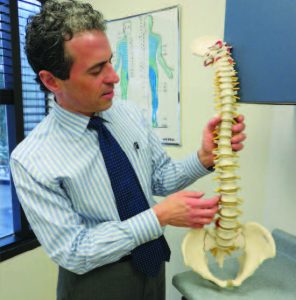




 DRIVEN TO CARE
DRIVEN TO CARE A SURE BET!
A SURE BET!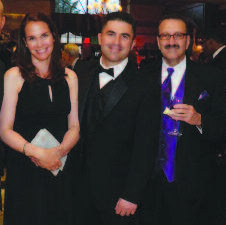


 “In pursuit of making great pizza,” Richer says, “I learned how to make great bread.”
“In pursuit of making great pizza,” Richer says, “I learned how to make great bread.” He is sitting in the dining room at Razza, where he has just finished shaping his dough into the now-iconic Razza shape that resembles a French batard. He glances over at the loaves, resting in individual linen-lined baskets. He consults with Octavio Gadea, who works with him on the bread. Then he continues.
He is sitting in the dining room at Razza, where he has just finished shaping his dough into the now-iconic Razza shape that resembles a French batard. He glances over at the loaves, resting in individual linen-lined baskets. He consults with Octavio Gadea, who works with him on the bread. Then he continues. Razza Right Now
Razza Right Now Let’s Eat
Let’s Eat

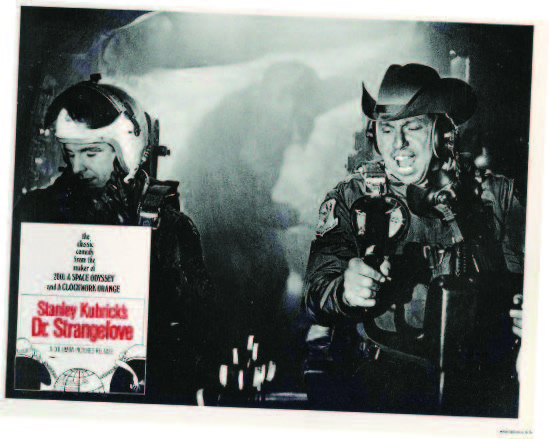
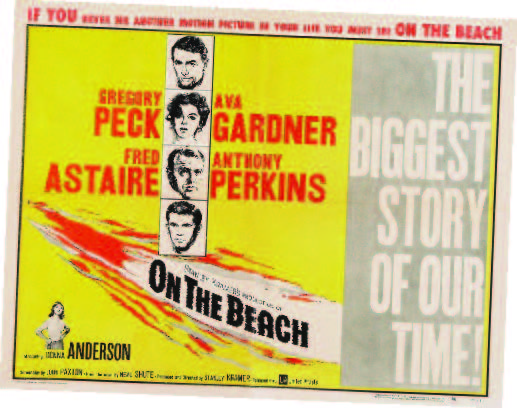
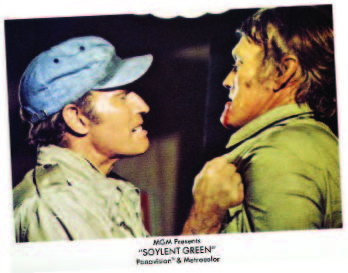



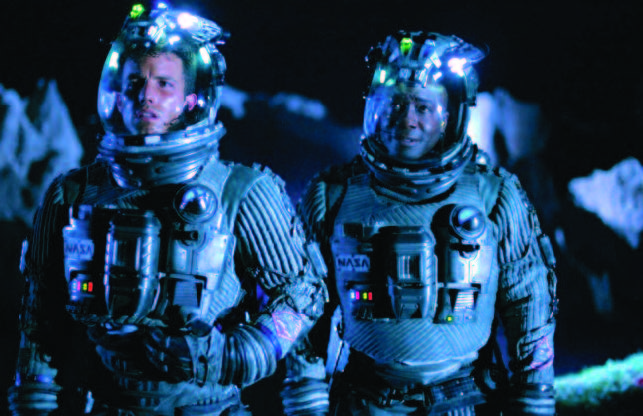
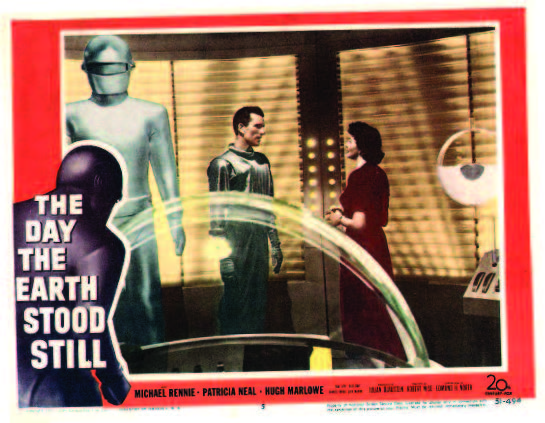
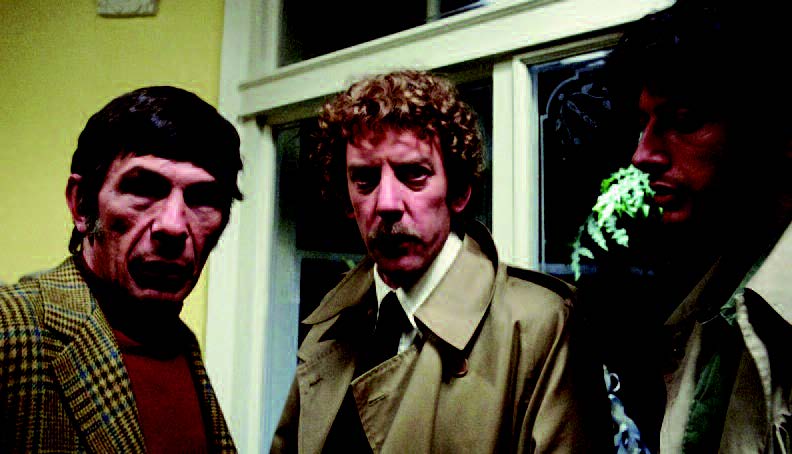
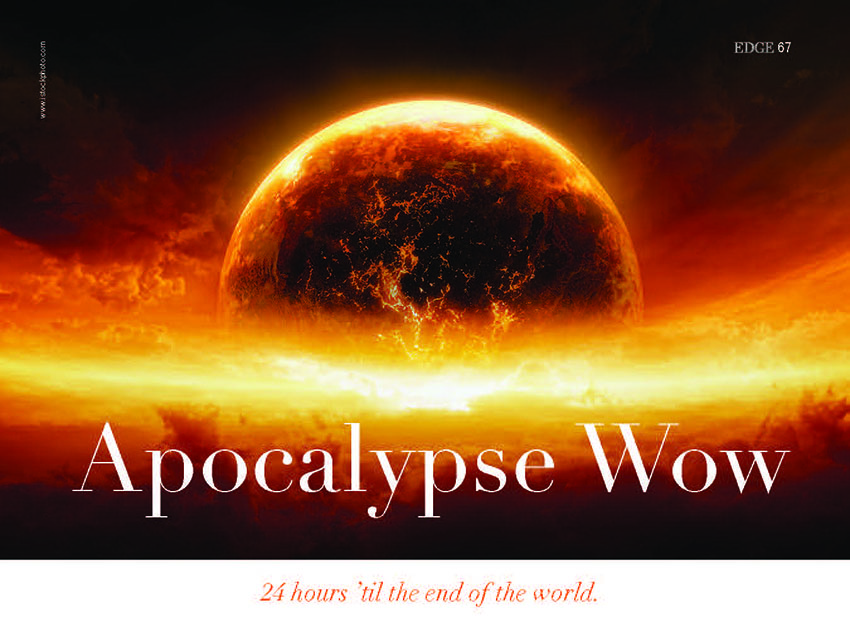


 Unfortunately, for some people and their pets the first boarding experience is also the last. Certain pets struggle with the boarding environment and develop nervous, defensive behaviors. The combination of an unfamiliar environment, strange people and animals, and changes to the typical routine can completely change an animal’s behavior. During my time working at the shelter, I noticed that some animals never quite adjusted to living in a kennel. We struggled to get these animals adopted because of these nervous, erratic, unpredictable, defensive, and even aggressive behaviors. Some animals responded with just a little extra attention, including the dog I adopted. As a last resort, to free up space in the shelter, we would place these nervous animals in foster care, where their behavior and temperament improved dramatically, making them much more adoptable. Some other downsides to pet boarding are the higher cost and risk of exposing your pet to disease. Most kennels require vaccinations, but there are a few illnesses (such as kennel cough) that spread in this type of environment.
Unfortunately, for some people and their pets the first boarding experience is also the last. Certain pets struggle with the boarding environment and develop nervous, defensive behaviors. The combination of an unfamiliar environment, strange people and animals, and changes to the typical routine can completely change an animal’s behavior. During my time working at the shelter, I noticed that some animals never quite adjusted to living in a kennel. We struggled to get these animals adopted because of these nervous, erratic, unpredictable, defensive, and even aggressive behaviors. Some animals responded with just a little extra attention, including the dog I adopted. As a last resort, to free up space in the shelter, we would place these nervous animals in foster care, where their behavior and temperament improved dramatically, making them much more adoptable. Some other downsides to pet boarding are the higher cost and risk of exposing your pet to disease. Most kennels require vaccinations, but there are a few illnesses (such as kennel cough) that spread in this type of environment. In cases where pet-sitting and boarding aren’t viable, the best option may be to travel with your pet. For the record, a high percentage of people who choose to travel with their pets do so because they are the ones with separation anxiety. Whatever is behind that choice, pet-friendly hotels are becoming more popular around the world and offer a surprising variety of amenities. Pet owners can find hotels that offer charming welcome gifts, comfortable pet beds, designated areas for walking, playing or bathroom breaks, pet room service, day care, and even luxury spas. Guests can also expect informed concierge services that can point them to pet-friendly attractions in the area. To find pet-friendly hotels in the United States, plug your destination into Pet-Friendly Hotels (pet-friendly-hotels.net) or Pets Welcome (petswelcome.com). According to Pets Welcome, these are the Top 10 Pet-Friendly Destinations
In cases where pet-sitting and boarding aren’t viable, the best option may be to travel with your pet. For the record, a high percentage of people who choose to travel with their pets do so because they are the ones with separation anxiety. Whatever is behind that choice, pet-friendly hotels are becoming more popular around the world and offer a surprising variety of amenities. Pet owners can find hotels that offer charming welcome gifts, comfortable pet beds, designated areas for walking, playing or bathroom breaks, pet room service, day care, and even luxury spas. Guests can also expect informed concierge services that can point them to pet-friendly attractions in the area. To find pet-friendly hotels in the United States, plug your destination into Pet-Friendly Hotels (pet-friendly-hotels.net) or Pets Welcome (petswelcome.com). According to Pets Welcome, these are the Top 10 Pet-Friendly Destinations


 BYOB…WITH A TWIST
BYOB…WITH A TWIST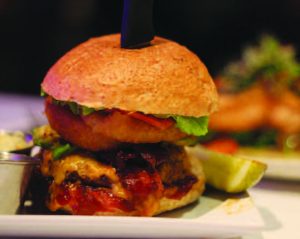




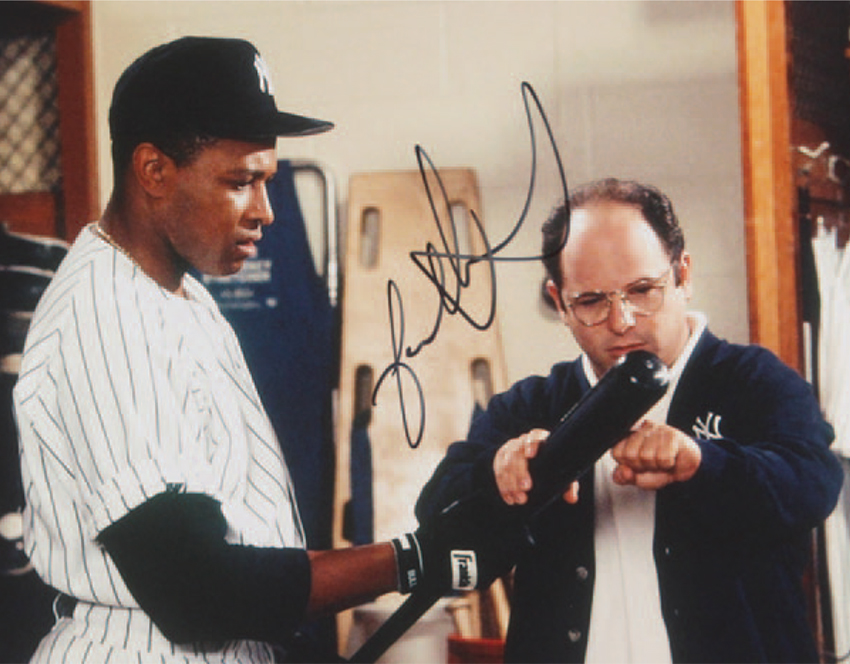
 Grain & Cane Bar and Table • Maine Lobster Benedict
Grain & Cane Bar and Table • Maine Lobster Benedict The Thirsty Turtle • Pork Tenderloin Special
The Thirsty Turtle • Pork Tenderloin Special The Thirsty Turtle • Brownie Sundae
The Thirsty Turtle • Brownie Sundae The Famished Frog • Mango Guac
The Famished Frog • Mango Guac Arirang Hibachi Steakhouse • Pork Belly Bao Buns
Arirang Hibachi Steakhouse • Pork Belly Bao Buns Daimatsu • Sushi Pizza
Daimatsu • Sushi Pizza Garden Grille • Beet & Goat Cheese Salad
Garden Grille • Beet & Goat Cheese Salad LongHorn Steakhouse • Outlaw Ribeye
LongHorn Steakhouse • Outlaw Ribeye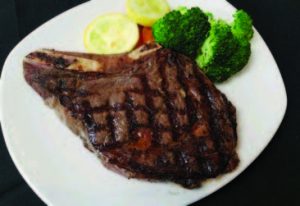 Outback Steakhouse • Bone-In Natural Cut Ribeye
Outback Steakhouse • Bone-In Natural Cut Ribeye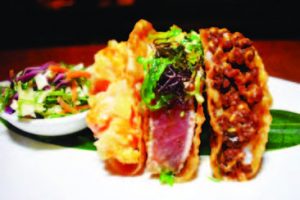 Arirang Hibachi Steakhouse • Japanese Taco
Arirang Hibachi Steakhouse • Japanese Taco Ursino Steakhouse & Tavern • House Carved 16oz New York Strip Steak
Ursino Steakhouse & Tavern • House Carved 16oz New York Strip Steak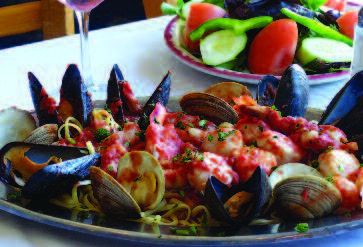












 As Trinitas worked to stay a step ahead of the coronavirus this past spring and deliver a high level of healthcare to those who needed to be admitted, another part of the hospital—the Ambulatory Surgery Center (ASC)—was closed and waiting to safely reopen, and is now firing on all cylinders. “Ambulatory” in the case of the ASC reflects its Latin root (abulatore: to walk). The ASC is an outpatient facility that allows our clients to have same-day procedures. Although there is always some risk in any type of surgery, the layer-upon-layer of Covid-19 precautions that have been adopted, as Trinitas doctors learn more about the virus, has minimized the risk of contracting and spreading the virus in the main hospital as well.
As Trinitas worked to stay a step ahead of the coronavirus this past spring and deliver a high level of healthcare to those who needed to be admitted, another part of the hospital—the Ambulatory Surgery Center (ASC)—was closed and waiting to safely reopen, and is now firing on all cylinders. “Ambulatory” in the case of the ASC reflects its Latin root (abulatore: to walk). The ASC is an outpatient facility that allows our clients to have same-day procedures. Although there is always some risk in any type of surgery, the layer-upon-layer of Covid-19 precautions that have been adopted, as Trinitas doctors learn more about the virus, has minimized the risk of contracting and spreading the virus in the main hospital as well.

 The $5.2 million 9,500 square-foot Ambulatory Surgery Center opened in 2014. Since then, more than 10,000 patients have been treated there.
The $5.2 million 9,500 square-foot Ambulatory Surgery Center opened in 2014. Since then, more than 10,000 patients have been treated there.




 GH: There is certainly the possibility of another surge, but it drastically depends on how people behave in the upcoming weeks, and whether or not they observe the safety precautions. If people choose not to wear masks, use proper hand hygiene, follow the guidelines of social distancing, and avoid crowds, I’d say another surge is likely. If it comes to that, we are prepared and will do our best to carry out the Trinitas mission, just as we did the first time around.
GH: There is certainly the possibility of another surge, but it drastically depends on how people behave in the upcoming weeks, and whether or not they observe the safety precautions. If people choose not to wear masks, use proper hand hygiene, follow the guidelines of social distancing, and avoid crowds, I’d say another surge is likely. If it comes to that, we are prepared and will do our best to carry out the Trinitas mission, just as we did the first time around. GH: The fear is understandable, but unwarranted. We use advanced technology as part of many steps to disinfect the entire hospital. We were an early user of the Surfacide Disinfection UV-C system. This technology uses ultraviolet light to sterilize surfaces after they’ve already been wiped down with bleach. We’re asking our community to not neglect their health by putting off elective procedures and diagnostic testing because they think it might be unsafe to come to the hospital. It’s actually one of the safest places to be at the moment because of this technology and our attention to the matter.
GH: The fear is understandable, but unwarranted. We use advanced technology as part of many steps to disinfect the entire hospital. We were an early user of the Surfacide Disinfection UV-C system. This technology uses ultraviolet light to sterilize surfaces after they’ve already been wiped down with bleach. We’re asking our community to not neglect their health by putting off elective procedures and diagnostic testing because they think it might be unsafe to come to the hospital. It’s actually one of the safest places to be at the moment because of this technology and our attention to the matter.



